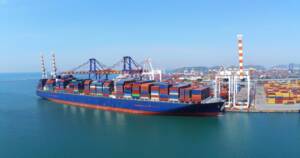In the complex world of international trade and shipping, understanding Incoterms (International Commercial Terms) is essential for smooth and successful transactions. These standardized terms, published by the International Chamber of Commerce (ICC), define the responsibilities and liabilities of buyers and sellers during the transportation and delivery of goods. In this blog, we’ll demystify Incoterms, shed light on their significance, and explore some of the most commonly used ones.
What Are Incoterms?
Incoterms are a set of three-letter trade terms that specify the rights and obligations of the buyer and seller in international sales contracts. They outline key aspects of a transaction, such as the transfer of risk, the point of delivery, and who is responsible for shipping costs, insurance, and customs clearance. By using Incoterms, parties involved in global trade can avoid misunderstandings, disputes, and costly errors.
The Importance of Incoterms
Clarity and Consistency: Incoterms provide a common language for international trade, ensuring that all parties involved have a shared understanding of their roles and responsibilities.
Risk Management: They help determine when risk and responsibility shift from the seller to the buyer. This is crucial for insurance and liability purposes.
Cost Allocation: Incoterms define who pays for transportation, insurance, and other charges, enabling better cost control and negotiation.
Compliance: Using Incoterms ensures that transactions align with international trade regulations and customs requirements.
Commonly Used Incoterms
1) EXW – Ex Works: The seller makes the goods available at their premises, and the buyer bears all costs and risks from that point forward.
2) FOB – Free On Board: The seller is responsible for delivering the goods to a specified port or vessel. Once loaded, the risk transfers to the buyer.
3) CIF – Cost, Insurance, and Freight: The seller covers costs, insurance, and freight to deliver the goods to a named destination port. Risk transfers to the buyer once the goods are on board.
4) DDP – Delivered Duty Paid: The seller is responsible for all costs and risks, delivering the goods to the buyer’s premises, cleared for import.
5) CIP – Carriage and Insurance Paid To: The seller is responsible for delivery and insurance costs to a named destination. Risk transfers to the buyer once the goods are handed over to the carrier.
6) DAP – Delivered At Place: The seller delivers the goods to an agreed-upon destination, but the buyer is responsible for unloading and clearing customs.
7) DAT – Delivered At Terminal: The seller delivers the goods to a named terminal at the destination, but the buyer is responsible for unloading and clearing customs.
Selecting the Right Incoterm
Choosing the appropriate Incoterm depends on factors like the nature of the goods, the shipping method, and the level of control and risk desired by both parties. It’s crucial to carefully negotiate and specify the chosen Incoterm in the sales contract.
In conclusion, understanding and correctly applying Incoterms is essential for anyone engaged in international trade. These terms provide clarity, minimize risks, and facilitate smoother transactions across borders. Whether you’re a seasoned exporter or new to global trade, a firm grasp of Incoterms is an invaluable asset for successful and efficient international business operations.
LCL vs. FCL: Choosing the Right Shipping Method for Your Cargo
In the world of international shipping, two common terms you’ll often come across are LCL (Less than Container Load) and FCL (Full Container Load). These terms describe different methods of transporting cargo, each with its own advantages and considerations. In this blog, we’ll delve into the details of LCL and FCL to help you make an informed decision when shipping your goods.
LCL (Less than Container Load): Maximizing Efficiency
LCL is an ideal option when you don’t have enough cargo to fill an entire shipping container. Here’s how it works:
1. Consolidation: Multiple shippers with smaller shipments share space in a single container. This consolidation minimizes costs and maximizes container space utilization.
2. Cost-Efficiency: LCL is often more cost-effective for smaller shipments since you only pay for the space your cargo occupies. This can be a budget-friendly choice for businesses looking to save on shipping expenses.
3. Flexibility: LCL is versatile and accessible for a wide range of goods, making it suitable for businesses with varying shipment sizes and frequencies.
4. Reduced Inventory Holding: Smaller shipments can help reduce the need for large warehouses and lower inventory holding costs.
However, there are some considerations to keep in mind with LCL:
- Transit Time: Sharing a container with other shipments can lead to longer transit times, as the container may only be dispatched once it’s full.
- Handling Risks: With multiple shipments in one container, there’s a slightly higher risk of cargo damage or loss compared to FCL.
FCL (Full Container Load): Optimal Control
FCL involves booking an entire shipping container exclusively for your cargo:
1. Control and Security: You have full control over the container, reducing the risk of damage or tampering during transit.
2. Faster Transit: Since the container departs as soon as it’s loaded, FCL shipments generally have shorter transit times compared to LCL.
3. Bulk Shipments: FCL is ideal for businesses shipping large quantities of the same product, allowing for bulk cargo movement.
4. Predictable Costs: With FCL, you know the exact shipping cost upfront, making budgeting and cost analysis more straightforward.
However, FCL has its own set of considerations:
- Higher Costs: Booking an entire container can be more expensive, especially for smaller shipments. It may not be cost-effective unless you have a substantial volume of cargo.
- Space Utilization: If you don’t have enough cargo to fill a container, you’re paying for unused space.
- Limited Flexibility: FCL is less flexible than LCL and may not be the best choice for businesses with varying shipment sizes.
Choosing the Right Method
To choose between LCL and FCL, consider the volume of your cargo, transit time requirements, budget constraints, and the nature of your goods. Smaller, infrequent shipments often benefit from LCL due to cost-efficiency and flexibility, while larger, time-sensitive shipments may warrant FCL to ensure control and faster transit. It’s crucial to work closely with your logistics provider to assess your specific needs and select the most suitable shipping method for your business. Ultimately, the choice between LCL and FCL should align with your unique shipping goals and requirements.



